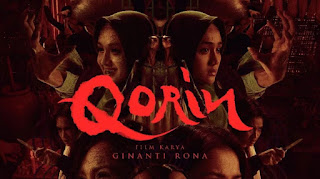Who's Scarier: Sadako or Kayako? ChatGPT Finds Out!
As someone who spends an awful lot of time writing words, with many of my peers also primarily engaging in the act of also writing words, the rapid growth of AI engines being able to mock up reviews and articles at the click of a button is of course, terrifying to us all.
However, can the robots actually help us bloggers, journalists, and content creators galore? For absolute shits and giggles (and as the curator of a spooky Asian themed blog) I decided to ask the Notorious G.P.T the burning question that has been dividing fans of Japanese horror since the noughties:
Once and for all, WHO IS SCARIER: Sadako or Kayako?!
While I copy/pasted the core factual text, I did edit Chat's findings to give it the good old Sensei Sensibilty "Voice".
Without further ado, let the robots definitively put this controversial matter to bed.
Title: The Haunting Horrors: Kayako vs. Sadako - Unleashing the Scariest of Japanese Spirits
Origins and Backstories: Kayako Saeki, from the "Ju-On" franchise, is a tormented spirit born from a violent murder-suicide that occurred in her home. Her rage and despair transform her into a vengeful force, leaving death in her wake. Sadako Yamamura, on the other hand, originates from the "Ringu" series, and she is a cursed entity trapped within a videotape. Her backstory is laced with tragedy and betrayal, which fuels her relentless pursuit of revenge. While both spirits have tragic origins, Kayako's connection to the physical space of her home makes her more grounded and unsettling, heightening the sense of fear.
Appearance and Presence: Kayako and Sadako possess distinct visual representations that contribute to their frightful aura. Kayako, with her long disheveled hair, pale skin, and hauntingly wide eyes, embodies the classic Japanese ghost archetype, known as the onryō. Her broken and contorted movements add an extra layer of dread to her presence. On the other hand, Sadako, with her dark, unkempt hair that obscures her face, gives off an otherworldly, almost demonic vibe. Her unnerving, slow crawl and icy stare pierce through the screen, leaving audiences in a state of unnerving anticipation. Both spirits exploit traditional Japanese ghostly aesthetics but manage to create distinct and terrifying impressions.
Methods of Terror: Kayako and Sadako employ different methods to instill fear in their victims. Kayako's manifestation is often accompanied by a spine-chilling death rattle, and she haunts her victims relentlessly, appearing unexpectedly and ominously. Her presence is inescapable, creeping into the lives of those who come into contact with her cursed home.
Cultural Context: Understanding the cultural context surrounding Kayako and Sadako is crucial in comprehending the impact they have had on the horror genre. Kayako, derived from the Japanese belief in vengeful spirits and the cycle of grudges, taps into a deeply rooted fear of unresolved anger and unresolved deaths. The themes of familial tragedy and the sinister consequences of violence resonate strongly with Japanese audiences.
Conclusion: Both Kayako and Sadako have secured their places as two of the most terrifying entities in Japanese horror cinema. Kayako's visceral presence and connection to her cursed home evoke a primal fear of the supernatural. Meanwhile, Sadako's methodical pursuit and association with technology tap into modern fears and the unease surrounding the digital world.
Ultimately, the question of who is scarier, Kayako or Sadako, boils down to personal preference and individual fears. Kayako's presence is raw and immediate, preying on our primal instincts and fear of the unknown. On the other hand, Sadako's calculated and methodical approach taps into our deepest anxieties, exploiting our vulnerability in an increasingly technology-dependent world.
Whether it's Kayako's ghostly visage and relentless pursuit or Sadako's eerie crawl and the curse of the videotape, both spirits have transcended the screen and become iconic figures in the horror genre. They have influenced countless filmmakers and left an indelible mark on the global horror landscape.
In the end, the battle between Kayako and Sadako is not about determining a definitive winner but rather celebrating the mastery of Japanese horror and its ability to terrify audiences through supernatural entities that transcend cultural boundaries. Both spirits have cemented their positions as true legends of horror, continuing to haunt our nightmares and remind us of the enduring power of Japanese cinema.
So, whether you find yourself trembling at the sight of Kayako's ghostly appearance or being consumed by the slow-burning terror of Sadako's curse, one thing is certain: the legacies of these two terrifying spirits will continue to send shivers down the spines of horror enthusiasts for years to come.








Comments
Post a Comment